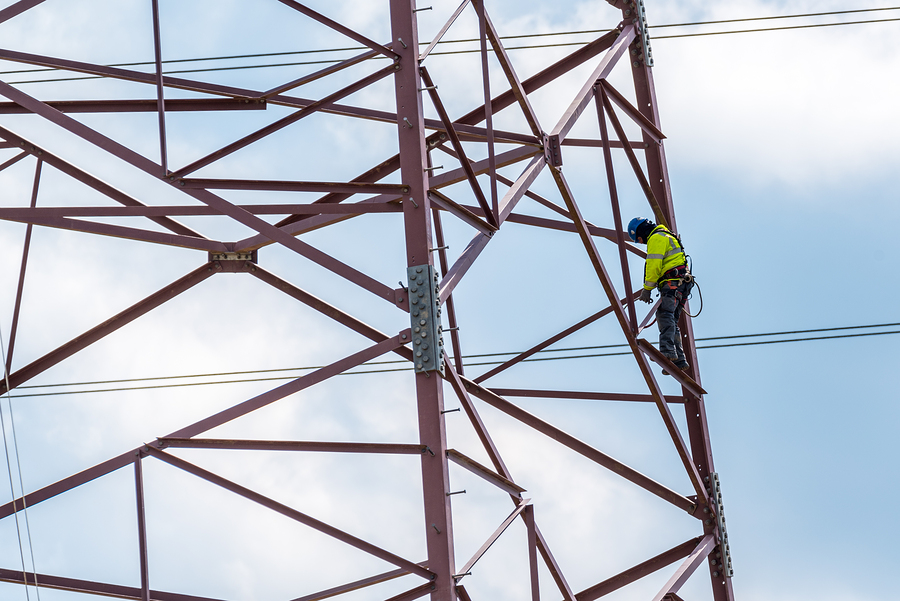
What’s the Solution to Power Outage Proliferation
They happen every year in California and throughout much of the Pacific Northwest: wildfires. According to the Interagency Fire Center, 8.2 million acres burned in 2018 in the U.S. overall. In the Golden State so far in 2019, land scorched nears 8,000 acres.
But wildfire season is slightly different this time around, in addition to displacing thousands of residents and businesses, the effects have also led to widespread power outages. Some of these have been scheduled by the state’s largest utility provider, Pacific Gas & Electric Corp., in order to ensure the safety of firefighters and emergency personnel battling the blazes.
However, patience has ceased to become a virtue for many of the state’s residents impacted, and the length of the outages is peeling back the curtain on what many people view as one of the country’s most pressing problems as it relates to infrastructure: the aging electrical grid. Because the vast majority of small-business owners and major corporations require power to provide, manufacture, or deliver products and services, the grid’s failings are forcing companies to evaluate their current processes and develop workarounds so service interruptions are minimized.
As veteran business owners can attest, it’s not if they’ll be affected by outages, but when and for how long.
Are blackouts happening more frequently?
If it seems like outages are occurring with greater regularity, it’s not your imagination. In 2017, the most recent year in which complete data is available, outages totaled 3,526 nationally, according to estimates from Eaton. These affected close to 37 million people — many of them business owners — and lasted close to an hour and a half per outage. They also occurred in all 50 states.
“For the ninth consecutive year, California experienced the highest number of power failures.”
For the ninth consecutive year, California experienced the highest number of power failures. And between 2008 and 2017, the total was close to 4,300, more than doubling the amount in Texas, which saw the second highest number at 1,603, Eaton reported. Furthermore, how much time passed before the lights came back on in the Golden State was considerably longer than the national average at 133 minutes.
Of course, outages are hardly isolated to the nation’s most-populated state. Several other states experience a greater number of them and for lengthier time periods than in years’ gone by. These included Alaska (138 minutes), the state with the lowest population density, Arizona (138 minutes), Wyoming (153 minutes), Vermont (172 minutes), and Montana (212 minutes).
Why are they occurring on a more regular basis?
Because so many variables play into the power supply and its reliability (e.g. weather-related events, source of electricity, car accidents that damage utility poles, etc.), it’s difficult to isolate their frequency to one issue. In general, however, the uptick is largely due to a lack of investment in fixing the grid as it presently exists and the growth in the country’s population. In other words, more properties are tapping into an already tapped out energy infrastructure.
As chronicled by the American Society of Civil Engineers, the U.S. at present has approximately 640,000 miles worth of high-voltage transmission lines. Most of these distribution lines were installed in the 1950s and 1960s. At that time, they weren’t expected to last more than 50 years. With it now being 2019, do the math. What’s more, in the contiguous U.S., power grids are operating at full capacity.
In short, wear and tear, accompanied by utility lines being stretched thin, has taken a toll.
“The government lacks an adequate federal energy policy.”
Additionally, investments in shoring up the grid have been insufficient. Some lines are owned by the federal government, which the ASCE notes lacks an adequate federal energy policy, while others are managed by investor-owned utilities. Specifically, they’re responsible for only 6% of electrical providers, yet serve close to 70% of customers.
Add in the surge in wildfire activity as well as other weather-related catastrophes — 17 of the last 25 Atlantic hurricane seasons have been above average in terms of activity, according to the National Oceanic Atmospheric Administration — something’s got to give. That something is the electricity.
These are among the reasons why major utility providers such as PG&E don’t expect blackouts to diminish anytime soon. At an October meeting held by the California Public Utilities Commission, PG&E CEO Bill Johnson noted it could be 10 years or more before they’re “really ratcheted down significantly,” NPR reported.
Although many households in California are still in the dark a month removed from the shutoff events, at least 2 million Californians were without power when the outages peaked in October.
What is the solution?
While there are many potential answers to the power problem, something everyone agrees on is there’s no quick fix. Some communities and municipalities, such as those in Wyoming, have decided to bury electrical lines so they’re underground, thus avoiding impact-related events that cause outages. This may help explain why Wyoming has averaged the fewest power outages between 2008 and 2017 (only 94). However, the problem with these is cost: three times more than traditional overhead, as noted by the Casper Star Tribune.
ASCE has a few suggestions, noting that any meaningful action must start at the top:
- Federal government must comprehensively assess where grid requires reinforcements and strategically invest in alternative energy sources such as biomass, hydroelectric, geothermal, and solar.
- Utilize remote sensing and inspection technologies to improve maintenance and real-time detection.
- Rebuild distribution lines so they’re more resistant to seasonal forces (wind, heavy snow, ice, etc.).
- Make it easier for utility providers to obtain permits they need to begin construction.
- Enact a national “storm hardening” plan that is guided by the recommendations of electrical engineers.
Restoring the nation’s power grid — as well as your own — will cost money, but doing nothing about it may cost more if outages continue to proliferate as expected. From 2003 to 2012, outages resulted in losses that averaged between $18 billion and $33 billion for the U.S. economy when adjusted for inflation, according to ASCE’s calculations. Even one lengthy outage can be devastating on productivity, never mind several.
At USC Consulting Group, we can power your processes so you can keep your business up and running so the lights don’t go out. We do this by analyzing how your company functions at present, set up asset maintenance best practices, and offer step-by-step solutions for where to fill gaps. The productivity improvements and supply chain optimization we recommend can help you work proactively so you’re always expecting the unexpected. Please contact us today.








